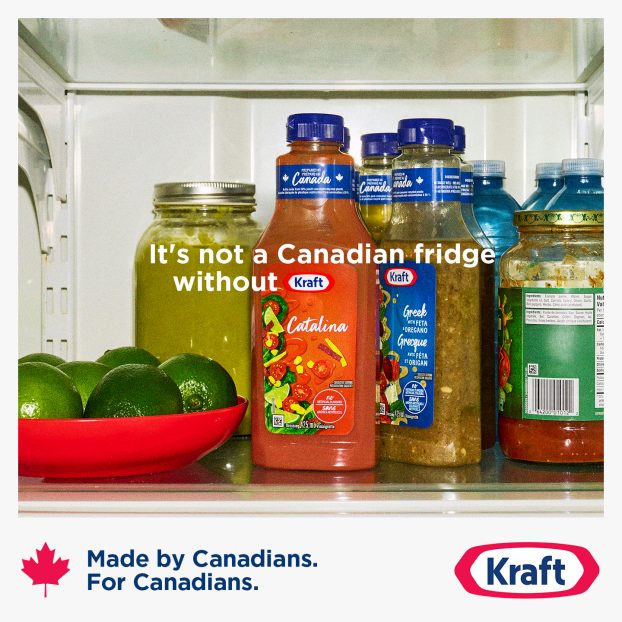Moderator:
(A) Lynn Fletcher, chief strategic officer,
Arnold Worldwide, Toronto
Panel:
(B) Robin Whalen, senior account director,
Publicis Dialog, Toronto
(C) Andrea Holmes, group account director,
MC Direct, Toronto
(D) Zak Bailey, national manager, direct response,
Alzheimer Society of Canada, Toronto
(E) Peter Hajaly, VP marketing services,
Reader’s Digest Association, Montreal
(F) Sarah P. Gencey, assistant VP marketing,
Manulife Financial, Toronto
(G) Kim Roseborough, president and CEO,
SourceLink Canada, Markham, Ont.
(H) Bryan Tenenhouse, SVP/CD,
Arnold Brand Response, Toronto
(I) Rosalie McGovern, managing director,
marketing, RBC Financial Group, Toronto
Fletcher: We’ve heard a lot about how the
consumer is marketing savvy and what that means to advertisers. How will DM fare?
Gencey/Manulife: Gone are the days when you can just rely on doing a direct mail campaign and getting a phenomenal response rate. You’re not just sending a DM, but you’re
leading it with advertising, e-mail marketing, Web site, etc. You’re building up the brand through other vehicles.
Whalen/Publicis: In B2B, direct mail is stronger than I’ve seen in many years. We just launched a campaign last year and direct response as a portion of the media budget was about 70%, and it was strictly to build the brand and increase credibility.
Tenenhouse/Arnold: Are you seeing a decrease in consumer?
Whalen: Yes, at least in the past four years.
Fletcher: Is there anybody doing solely direct mail without any other form of marketing?
Bailey: At the Alzheimer Society, we only do direct. So we think the future is pretty rosy. As companies try to establish their brands, the delivery to the home has become key. As
consumers we can weed out a lot of messages. But your mailbox is a much more personal space and I think the weeding is much more selective. There’s a fundamental principle of DM that hasn’t gone away: It’s personal.
Roseborough/SourceLink: From a supplier
perspective, if you look at the bulk of mail, over the last three years, we had a drastic decrease. Folks that we used to mail one
million pieces for went down to 200,000.
The volumes aren’t where they were a few years ago, but they’ve drastically increased in the last 18 months.
Tenenhouse: Why do you think that is?
Roseborough: People have gone away from doing large volume, irrelevant marketing. The clients are looking at their customers, figuring out what they need, what they want, what’s working, what’s not working and it’s starting to gain. We also have more clients that are using direct mail for the first time. A lot of them were traditionally using mostly e-marketing.
Fletcher: What type of
customers are they?
Roseborough: Some of them are retail, and also B2B, and there are companies using DM on a more relevant basis. There are some financial institutions which were using direct mail primarily for acquisition, and now they’re using it to develop a relationship.
Fletcher: Coming back to the consumer being marketing savvy
and time pressured, what skill do you think is required in direct
marketing professionals today?
Roseborough: The customer expects you to know them better. I find
it almost offensive when I open an envelope and it’s obvious this company you spent a lot of money with doesn’t know you.
Hajaly/Reader’s Digest: So does a direct marketing professional need
to be more of a generalist today? Is it knowing more about the
consumer, privacy, the environment versus the days when you were putting out mail and putting out mail?
Whalen: Having an understanding of other media is absolutely more important than ever before.
McGovern/RBC: But there are also efficiencies because you start
leveraging. I remember when the DM group would go off and do its own thing…. Now you have to be very well-rounded and know
your customer.
Fletcher: What role does consumer insight play in the process of developing DM?
Tenenhouse: It makes all the difference in the world, because when somebody gets that mail they go ‘aha, that company understands me.’ That’s huge.
Hajaly: At one time, you would measure transactions. Today we want to find out about their behaviour, their attitudes. It’s about asking them: ‘What do you want to see in your magazine?’ It’s about
relevance and having the customer open the mail, and appreciate what you’re trying to address.
Fletcher: We talked earlier about DM being a personal medium – what gets it noticed?
McGovern: We’ve tried everything from lifestyle to logos on envelopes to really low interest rates, and typically the low-interest rates on a credit card application get the most response.
Fletcher: Can you give any examples of really relevant work?
McGovern: I received a magazine from HBC, and it was just stunning. They got me at the right time, the right age – except they got my title wrong.
Tenenhouse: I was at my mother-in-law’s on the weekend and there on the coffee table was a magazine from Kraft. What’s cooking. It had her name; it was personalized.
I asked: ‘Did you order this?’ She said: ‘I have no idea how I got that, but I love getting it.’ She actually reads the whole thing, and she appreciates it because it’s personal.
Hajaly: Our magazine is now targeted –
we have a family edition and a mature
edition. So we have two editions going out, and we’re looking at more. That’s what
advertisers want – lower CPMs, very
targeted. ‘Forget millions of people, we want this group.’
Tenenhouse: HBC did another piece
just recently that targets new home buyers. It welcomes them to the neighborhood
and tells them where the closest
HBC store is. It’s smart, and it makes you feel valued.
Whalen: Shoppers Drug Mart Optimum
program drives you [to the store]. The
communication, the offers in the mail are all of the products that I would be likely
to purchase. They obviously get it from
my profile.
Hajaly: I liked the new Aeroplan package – the style, the colour, the design and how
it opened.
Bailey: I had the complete opposite reaction. They redesigned their whole look without telling us. So you don’t know if you’re
actually on the Aeroplan Web site or not;
it’s so completely different from what it was before. They sent me a new card and it was very stylish but they needed another piece of paper that said: ‘Here’s your new Aeroplan card.’ The pamphlet, which was
a beautiful pamphlet, said nothing.
Hajaly: But the point is, you opened it because of the design.
Fletcher: We’re all relationship marketers
in the room. To what degree do you think
customers are looking for relationships
with marketers?
Tenenhouse: I don’t think they’re looking….
Bailey: I disagree. Consumers want to
maintain loyalty. I don’t want to go and shop at 10 different drug stores; I always want to go to Shoppers. My father would drive 20 miles to save 20 cents on a gallon of milk. We would spend 20 cents more on a gallon of milk to not drive. So I think there’s a
fundamental shift in behaviour, and smart brands can use CRM to their advantage.
Tenenhouse: But are they sitting at the kitchen table waiting for us to send them an offer? I don’t think so.
Roseborough: I don’t think they’re sitting
at the kitchen table waiting for an offer,
but as a consumer, I have one primary financial institution, one drugstore, one grocery. I don’t have a lot of time; I want everything to be simple. I’m not the person who carries
50 loyalty cards in my wallet. I have three.
But I want a relationship with those
three brands.
Tenenhouse: Right, but if you go to Loblaws because it’s convenient….
Roseborough: I go to places that aren’t
convenient location-wise. But they made it convenient for me, by having telephone
banking, by sending relevant DM
packages to remind me about things I need
to do financially. If they stopped doing
that, I can’t say I would stay with them
long term.
Tenenhouse: That’s retention. But what about acquisition? I don’t think people are waiting around for a telco to send them an offer for eight cents a minute versus the 10 cents they’re paying.
Whalen: I don’t think people are wanting
relationships with marketers. I think they want to feel valued and that their business is appreciated. How that happens is anybody’s guess, whether it’s a loyalty program through the mail, offers, or personalized discounts. I think they just want to know that the brand knows who they are.
Holmes/MC Direct: And when you communicate to me, tell me what the benefit is to my life. Make sure it’s really clear and relevant. That will build complete loyalty.
McGovern: At RBC we started speaking in a
language that’s more personable to customers. Rather than talking about the person writing the letter, now it’s saying: ‘I’m writing to you.’ We bring it back down to the customer’s level, because if they do have a complaint, they tend to go back to that person [who wrote the letter].
Hajaly: We’ve done tests that show if you
put a picture of the individual who’s writing to the consumer you get a higher response rate. Having it signed by the individual does better as well. It goes back to how
you communicate.
Gencey: To that point, people like to feel that you have their best interest in mind. And if
[a customer calls] to say: ‘This is too expensive for me,’ you would hope that the company rep is not going to try to keep [him] in that plan, but downsize [him] to something that’s more affordable and still meets [his] needs.
Whalen: I have a direct mail horror story. I’ve been a customer of an auto club for about
10 years. I keep getting acquisition letters.
Group: No!
Whalen: I’ve received three of them. Every
time I get it, I call and say: ‘I’m a member
of your auto club.’ And every year I get
‘Sorry, that won’t happen again.’ It angers me because I want to feel that my little teensy piece of business matters. Do I care if
this company sends me a newsletter?
No, because it’s a low-interest category.
But the fact that they don’t even know who
I am is what angers me.
Fletcher: If you were talking to someone who’s entering a career in DM right now, what words of advice would you have?
Gencey: Be well-rounded, understand research, data, even product…and put the product
benefit in the direct mail offer.
Hajaly: Figure out how to communicate ‘faster, better, cheaper.’ To me that’s the game.























